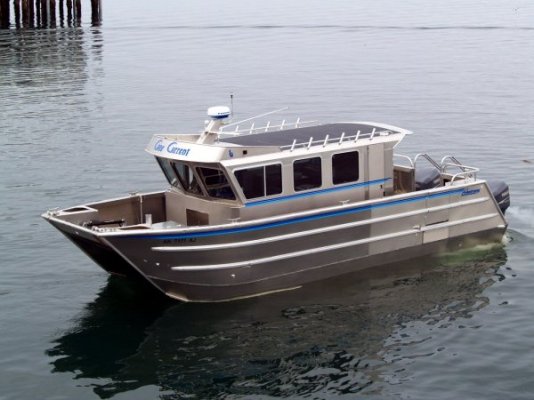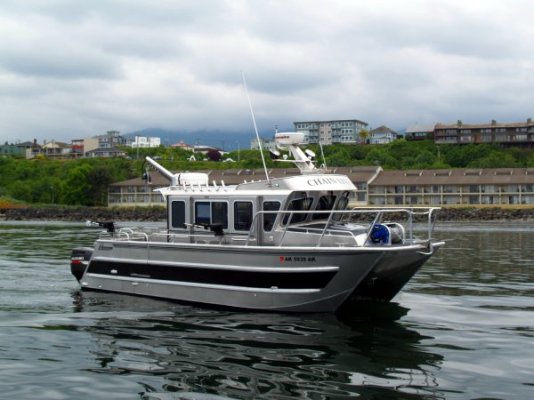nuccifilms
Veteran Member
currently i'm very interested in a 33' american tug. i feel it has the rugged, functional quality, that fits my needs; light fishing, short cruising and mostly living aboard. i've seen some wonderful powercats, but all leave me with the impression that they may be more boat than i need. perhaps some pros & cons could help me know better what work for me?
the small wrinkle to my plans is, i'm trying to do my mooring in the philippines. the marinas there are quite limited. would the abundance of coral reef and shallow regions in the region also be a factor in my choice of hull? do i want a powercat for it's shallow displacement, making some areas more accessible? would a trawler vessel be a safer bet for it's sea worthiness, as well as not having a beam that could add to my problem in finding already limited berthing? performance not a comparison factor for me. safety, mooring and ease of use and economic upkeep over time, are what comes to mind as my concerns. does anyone know what vessel best suits my needs?
the small wrinkle to my plans is, i'm trying to do my mooring in the philippines. the marinas there are quite limited. would the abundance of coral reef and shallow regions in the region also be a factor in my choice of hull? do i want a powercat for it's shallow displacement, making some areas more accessible? would a trawler vessel be a safer bet for it's sea worthiness, as well as not having a beam that could add to my problem in finding already limited berthing? performance not a comparison factor for me. safety, mooring and ease of use and economic upkeep over time, are what comes to mind as my concerns. does anyone know what vessel best suits my needs?



